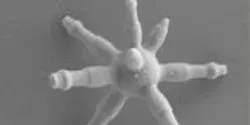Materials Science

The same quality that buffers a raincoat against downpours or a pan against sticky foods can also boost the performance of solar cells, according to a new study from University of Nebraska-Lincoln engineers.

Electronics giant TDK Corp. and the University of Alabama have signed a two-pronged research agreement to address challenges associated with the growing electric-energy movement and the miniaturization of electronic components.

Groundbreaking work at two Department of Energy national laboratories has confirmed plutonium’s magnetism, which scientists have long theorized but have never been able to experimentally observe. The advances that enabled the discovery hold great promise for materials, energy and computing applications.

Researchers have developed a new design for a cloaking device that overcomes some of the limitations of existing “invisibility cloaks.”

A new recycling method developed by scientists at the Critical Materials Institute, a U.S. Department of Energy Innovation Hub led by the Ames Laboratory, recovers valuable rare-earth magnetic material from manufacturing waste and creates useful magnets out of it. Efficient waste-recovery methods for rare-earth metals are one way to reduce demand for these limited mined resources.
















